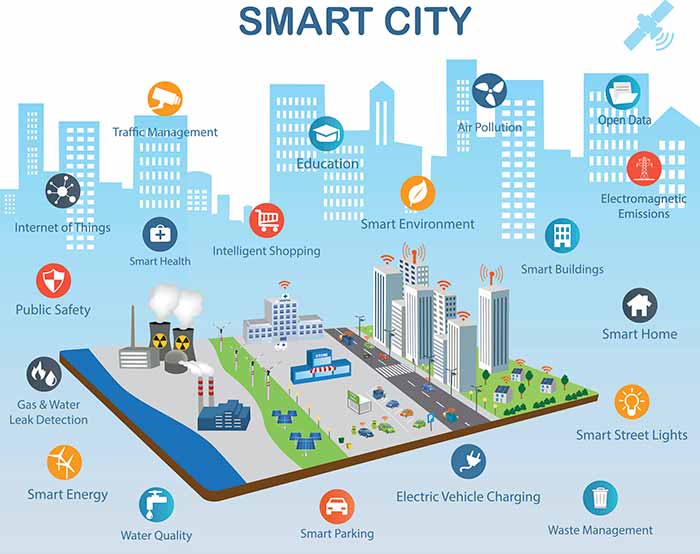Smart Cities play Bright Innovations aims for $8m IPO second time around

Pic: Morsa Images / DigitalVision via Getty Images
Israeli tech hopeful Bright Innovations looks like finally making it to the ASX after an attempt in 2016 went awry.
The “smart city” play (ASX:BRT) is commercialising an open Internet of Things platform, and they’re looking to list within three months.
The company describes itself as a connector of “people, devices and the urban environment to build smart and interactive cities of the future”.
Its first run at the ASX was an attempted backdoor listing via a company called Top End Minerals — then led by Joseph ‘Diamond Joe’ Gutnick — which was keen to do a deal. It ended up as ASX-listed Myanmar Metals (ASX:MYL) not long after.
At the time Bright, a former street light maker, was still focused on the LED light element of its Coral Reef product — an “Internet of Things” platform.
Internet of Things (or IoT) refers to technology that allows “dumb” devices such as cars, street lights or heart monitors to swap information over the Internet.
- Bookmark this link for small cap breaking news
- Discuss small cap news in our Facebook group
- Follow us on Facebook or Twitter
- Subscribe to our daily newsletter
Coral Reef is marketed as “the world’s first open smart city platform that provides application developers with access to communication platforms, audio, weather sensors, video, marketing and much more”.
There is a trend towards cities around the world adopting smart city policies. The Australian federal government launched a “Smart Cities Plan” in April 2016.
“[We had been] looking at the Australian market for quite some time and we were looking for the right way to do it and the right partner,” Bright chief Rami Mirsky told Stockhead.
“There was something there with an incident [concerning the Top End Minerals deal] where we weren’t happy and we immediately got out of the transaction.” Mr Mirsky says Top End lodged an announcement without notifying them.
$8 million IPO
Now Mr Mirsky believes he has the right corporate support network in place and is going for a clean Initial Public Offering.
The last attempt at a float valued Bright at $US10 million ($13 million).
Hamza Habib from Elysium Capital Partners, Brights’ strategic advisor in Australia, says the company is more mature now and has more projects in the pipeline — but he wouldn’t be drawn on the value market cap they are seeking.
Bright is looking to raise $7 million to $8 million. A pre-IPO round in January raised $1.5 million from funds in Australia, Singapore and India.
Cornerstone investor Mayfair 101 is believed to have partially underwritten the upcoming IPO for up to $5 million.

Mr Mirsky says the Coral Reef platform has so far made a total $US1.5 million in revenue from six pre-pilot projects in Israel.
They currently have a binding contract with Certis CISCO, one of Asia’s largest security and cyber security organisations, for whom they’re part way through installing a pilot project in Singapore.
They hope to turn a handshake deal with a Chinese partner into a real contract soon; are in talks to embed their software in a development project in Melbourne; and have signed a deal with Velpic (ASX:VPC) to add that company’s tech into Coral Reef.
Mr Mirsky says they will be announcing more contracts in the lead up to the IPO.
Land of opportunity
Mr Mirsky says he is targeting Australia as a place to establish the business because it is not as advanced in municipal-level IoT as early-adopters such as Singapore or Dubai.
“We haven’t seen a roll-out [in Australia] as aggressively as we have in Singapore or Dubai. I think it’s just starting here,” he said.
Bright fits its terminals to street lights which act as information nodes — the cost of which is bundled with the lighting network they provide. A fee is then charged for an ongoing IoT service.
Other companies such as Buddy Platform (ASX:BUD), Sensen Networks (ASX:SNS), and CCP Technologies (ASX:CT1) are operating similar platforms in Australia.
Mr Habib says Bright wants to be the connecting software for all IoT devices in a development or project, rather than just look at one element like parking metres, or water.
UNLOCK INSIGHTS
Discover the untold stories of emerging ASX stocks.
Daily news and expert analysis, it's free to subscribe.
By proceeding, you confirm you understand that we handle personal information in accordance with our Privacy Policy.








